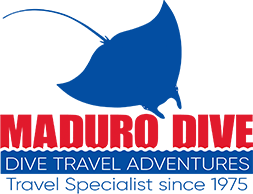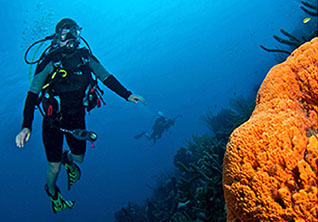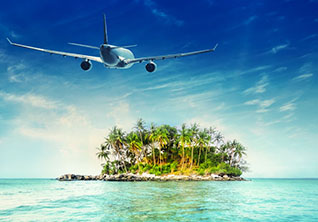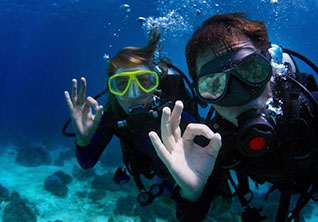The Mantas of Yap
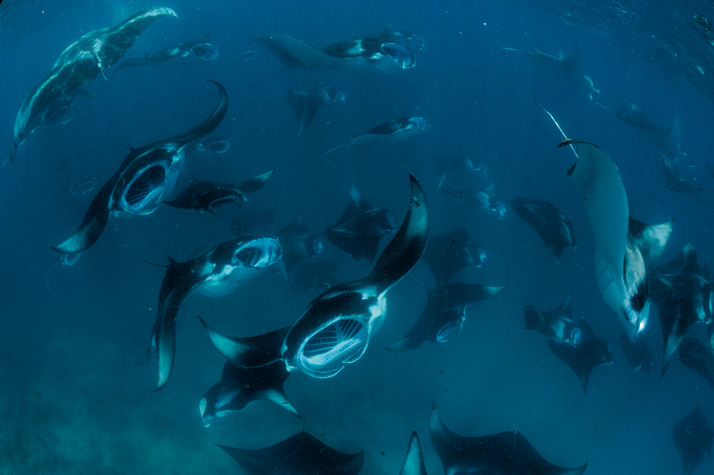
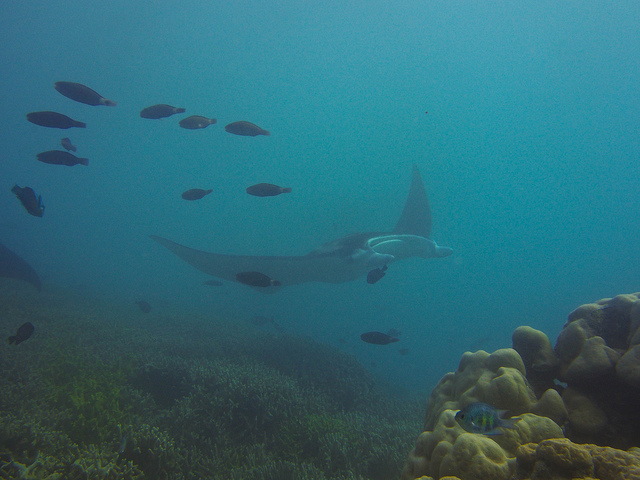
If you are lucky, you may have seen a manta or two while diving, but in the waters off the island of Yap, it’s not uncommon to see a dozen or so 12-18ft wide mantas slowly going past you or hovering just above the nearby coral as wrasse and other small fish dart back and forth while cleaning parasites off the mantas. There are over 100 resident mantas in the waters of Yap, and nightly they go out into the deep waters to feed on plankton, and each morning they return to designated coral cleaning stations to remove microscopic parasitic hitch hikers. From December to April the mantas display courtship rituals, breach out of the water, somersault and form underwater multiple member conga lines. The word “manta” derives from the Spanish word for blanket, and when a manta gently moves though the waters a few feet above you, the cover is large, wide, and alive. This is just one of the scenarios that plays out daily when you dive Mi’l Channel (Manta Ray Bay or Manta Ridge) or at Goofnuw Channel (Valley of the Rays).
Now, to find Yap on a map, place the tip of your index finger on Hawaii, next place the tip of your middle finger on Guam. Now lift your index finger off Hawaii and rotate it southeast of Guam by about 500 miles and you just found Yap. In reality it is just “plane” easier to take United Airlines on this island hopping adventure.
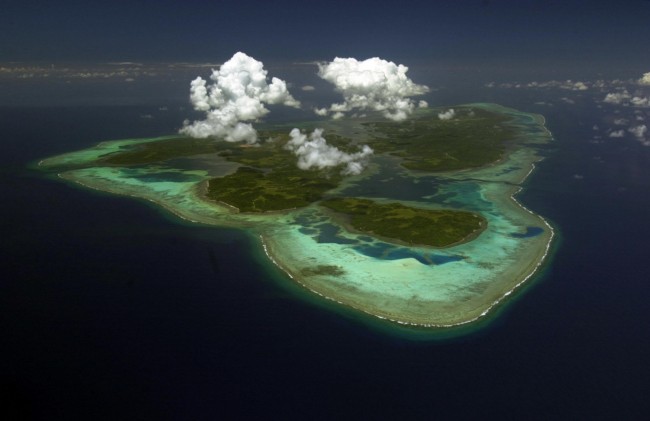
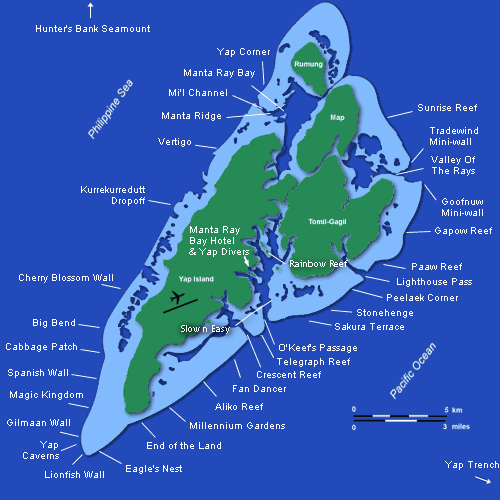
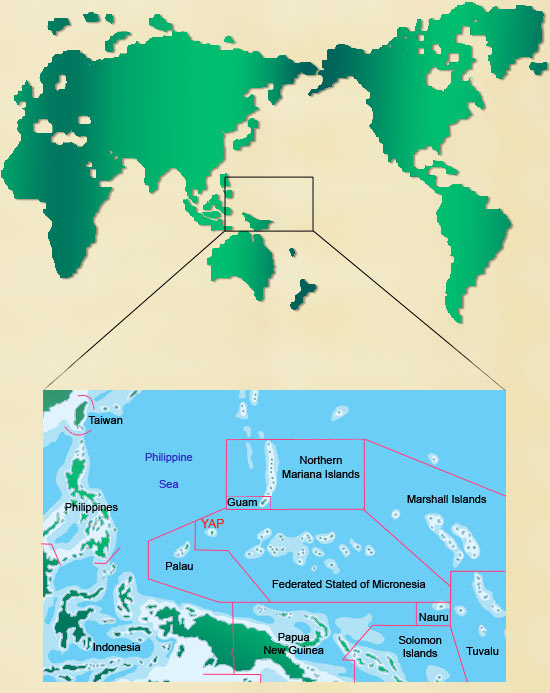
Although the Indonesians on Yap proper and the Polynesians on the outer islands have been living on Yap for some 3,000 years, it took a European explorer from Portugal in 1525 to discover the Islands. The local Islanders called themselves Wa’ab and with great cultural sensitivity possessed only by Europeans in those days the Islands were promptly called Yap and the people Yapese. Yap by the way means, “canoe paddle” in Wa’ab.
To make history short, in 1886 Pope Leo XII gave Yap to Spain and three years later Spain sold Yap to Germany who had to give guardianship to the Japanese in accordance with the Treaty of Versailles in 1919. The Japanese built a lighthouse and later used Yap as a stationary aircraft carrier until the Americans in WWII bombed them heavily. Wrecks of Japanese Zero Fighters, Suisei dive-bombers, Gekko night fighters, Ginga bombers, L2D2 transport planes, American B-24’s, Hellcats, Helldivers, Corsairs, and Avengers can still be seen on shore as well as underwater.
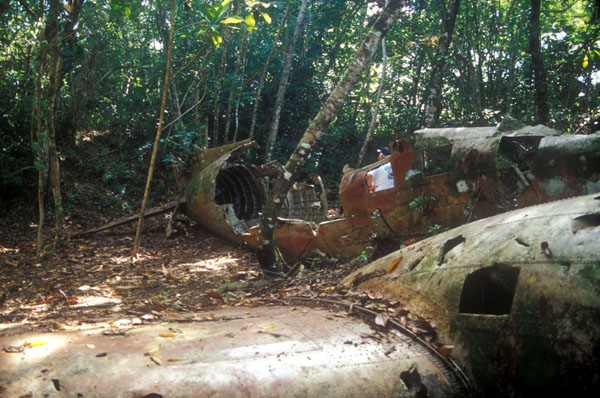
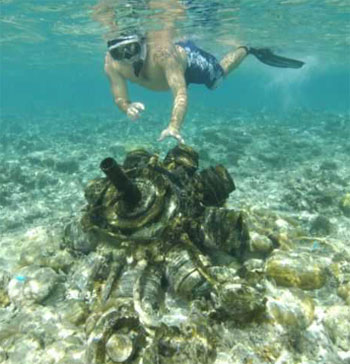
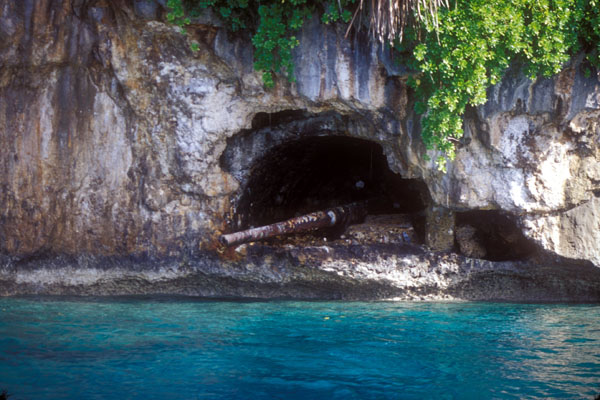
Yap is nine degrees north of the equator and part of the Federated States of Micronesia, which also includes Truk, Pohnpei, and Kosrae. Yap is comprised of four volcanic islands, Yap Proper, Maap, Tomil-Gagil, and Rumung, which volcanically lifted up from the Philippine Sea Plate. Yap also consists of some 130 other atolls and islets that extend some 600 miles. The State of Yap covers 118.9 sq miles total, with a landmass of 38.7 sq miles. One of the volcanic atolls Ulithi, for seven months during WWII was secretly home to the world’s fourth largest Naval base. The 553ft long USS Mississinewa was sunk here at a depth of 120ft by a Japanese Kaiten, manned suicide, torpedo. Ulithi is also the home of a hawksbill turtle sanctuary.
Yapese are proud of their old cultural ways which include using several sizes of stone money. Some of the stone circular coins are 12ft in diameter and take some 20 men to lift. When they set these stones in groups it is called a bank. They may trade the stones during ceremonies, or during transfer of land, but although the ownership of the stones may change, the location of these giant monetary units tends to be set in stone. Yapese typically went to Pulau’s Rock Island where they quarried and shaped the large stones, then they brought them 280 miles back to Yap using nothing more than canoes made out of mahogany or breadfruit trees and with sails made out of plaited leaves. For navigation they used their masterful knowledge of a group of 32 stars passed down from generation to generation.
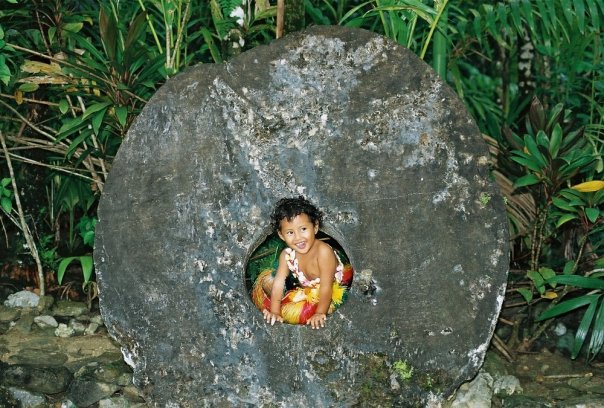
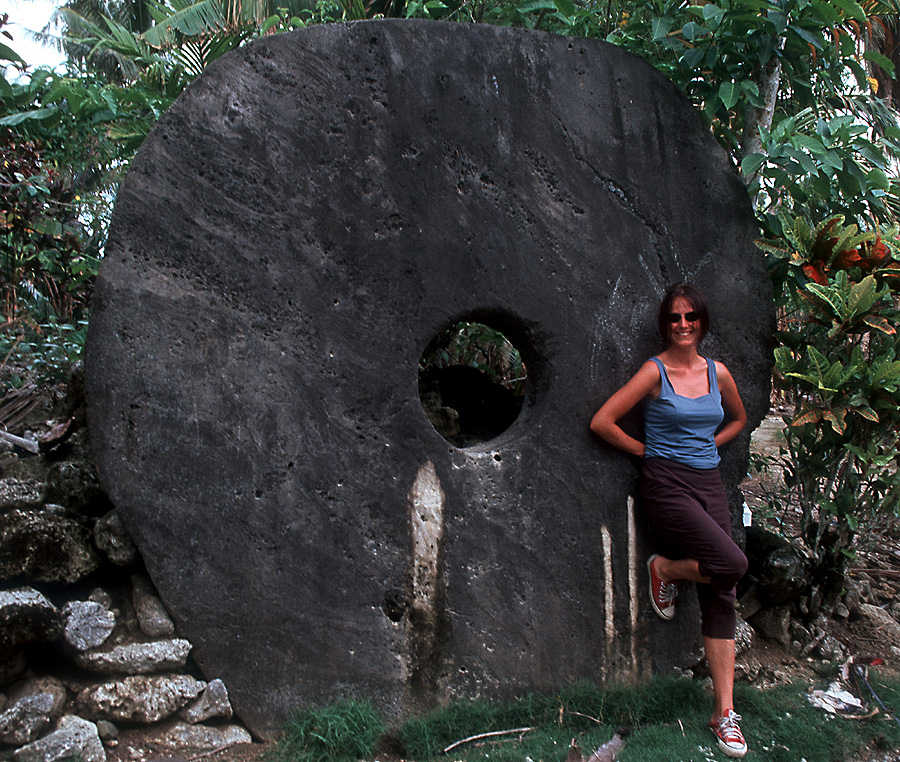
Yapese still have a caste system and each village has a tribal hut just for men where skills such as fishing and sailing techniques are learned from elders. On the outer islands men wear loin clothes called “thus” and topless women wear skirts called “lavalavas”. During Yap day, March 1st and 2nd, even local women on Yap Proper, must go topless. On the other hand, showing legs and thighs of women is considered indecent. Yap Day is also a time to see story dances, try local foods, see races up betel nut trees, hear local music, show off coconut husking skills and arts, and to view exquisite craft skills. On non-diving days cultural trips are a great way to meet the locals and see some of these activities.
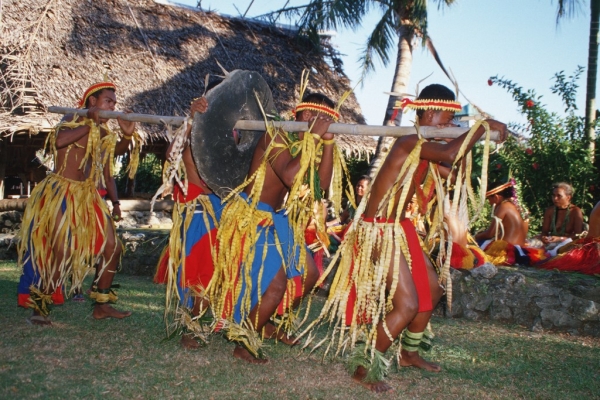
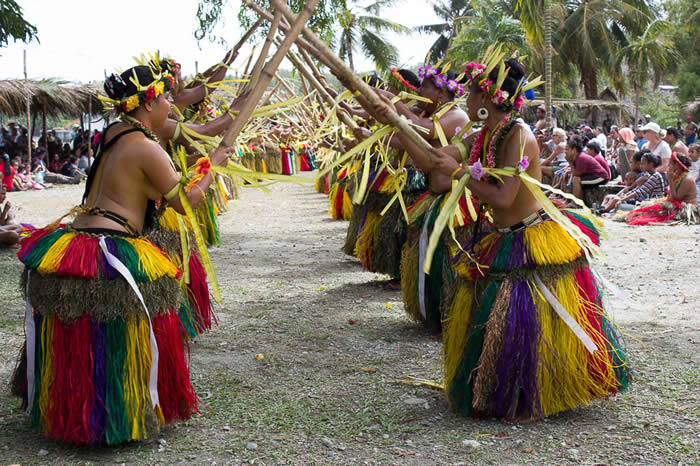
Back to scuba diving, Bill Acker first came to Yap in 1976 as a Peace Corps volunteer and within a few years began Yap Divers. He and his family now own and operate Manta Ray Bay Resort. Each of the rooms comes complete with modern conveniences and beautifully decorated marine themes from nudibranchs, sharks, fish, squids, or stingrays. Rooms with Ocean views, private plunge pools, stone showers, or a private rooftop jacuzzi are very popular. Guests can swim in the main pool with mantas painted on the bottom. You can eat, dine, drink, or even watch open-air movies on a permanently moored 110-year-old 170ft long Phinisi schooner from Indonesia called the MV Mnuw. At the Nautical Weaver Bar on the bridge deck or at the Crow’s Nest Bar you can delight in the fresh taste of Hammerhead Amber or Manta Gold microbrews made right at the resort under the name: Stone Money Brewing Company. On the main deck is the Manta Ray Bistro known as the island’s finest restaurant. Manta Ray Bay Resort is also home of YAP divers and the Taro Leaf Spa.
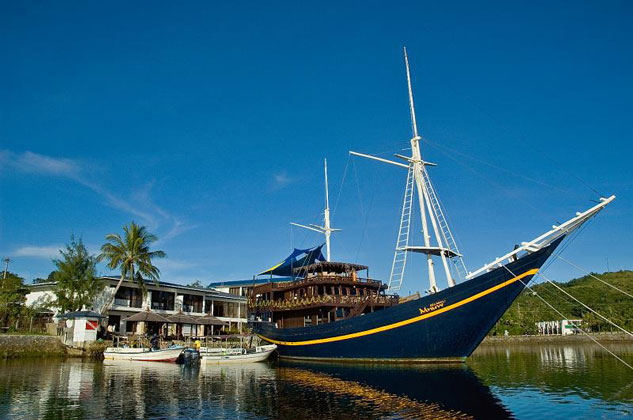
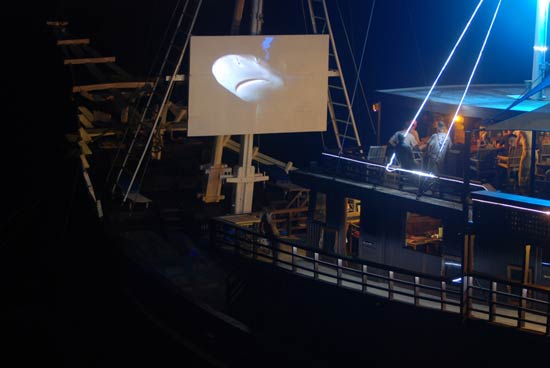
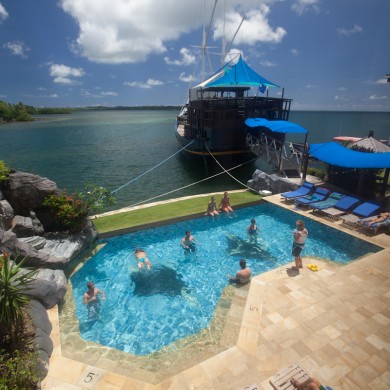
Yap Divers has eight boats of various sizes to take you to Rainbow Reef where 30-40 mandarin fish perform romance rituals daily. At Vertigo, steep ledges and free handouts ensure sharks of all types such black tips, silky, gray reef, white tip, black tips, will show up. Scalloped hammerheads, nurse, leopard, zebra, and whale sharks are often spotted around some 50 other known dive sites. Yap Caverns is a must do for any diver that loves caves and swim throughs.
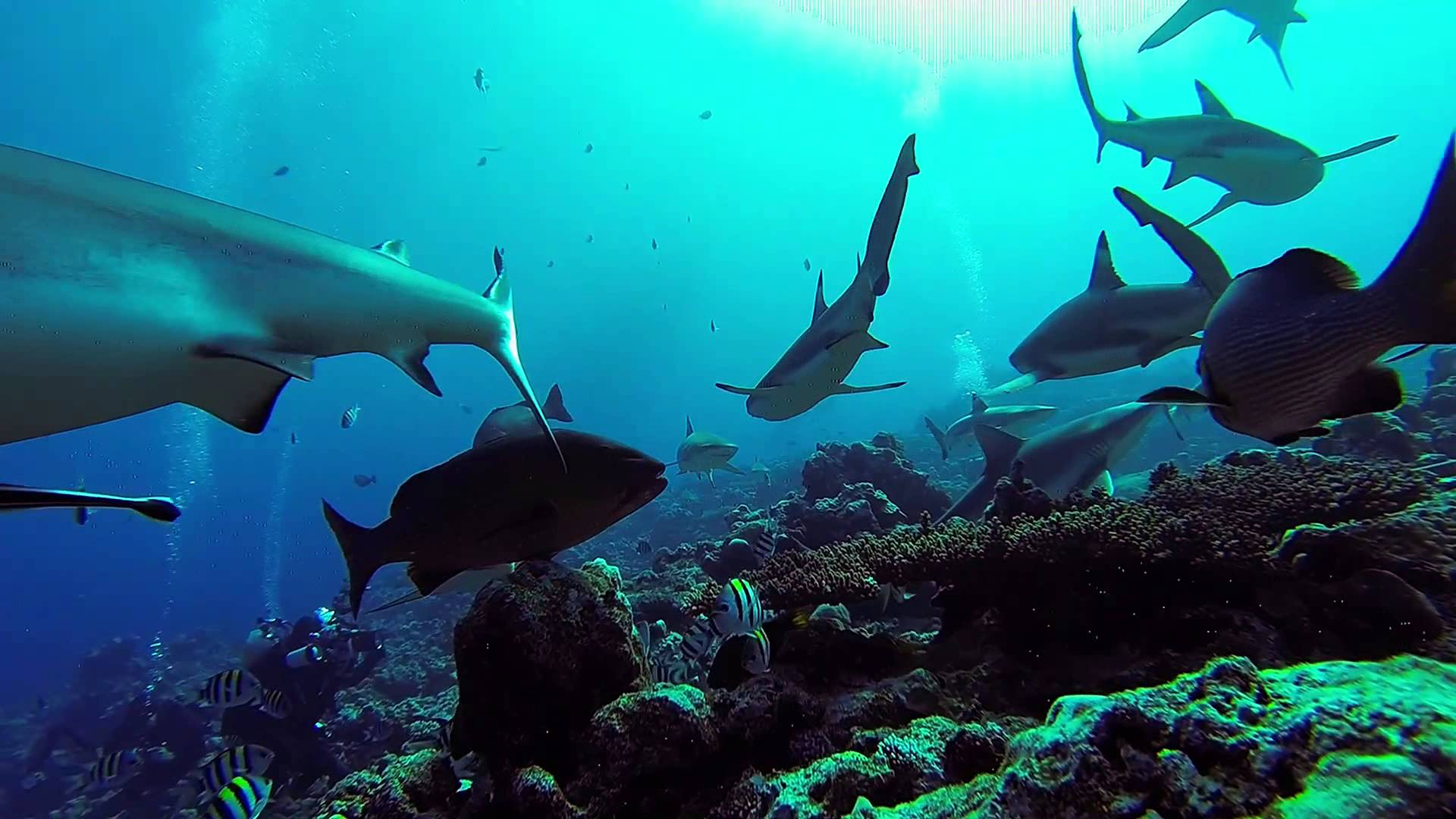
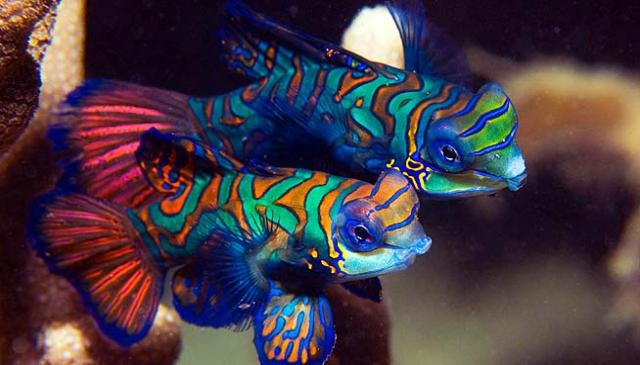
From Hunter’s Bank Seamount, a sunken island, 17 miles North of Yap to 15 miles east at Yap Trench that descends down 28,000ft you have a chance to see coral cabbage patches, torpedoes, machineguns, and other military artifacts, schools of large humphead wrasse, bluefin trevelly, giant trevelly, yellowfin, skipjack, wahoo, mahi-mahi, barracuda, red snapper, and grouper. Dolphins, pilot whales, and even Orcas whales pass by Yap.
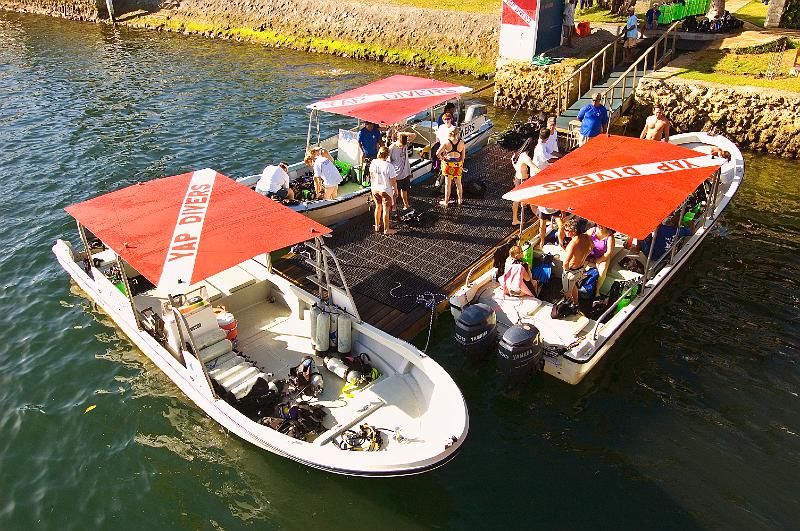
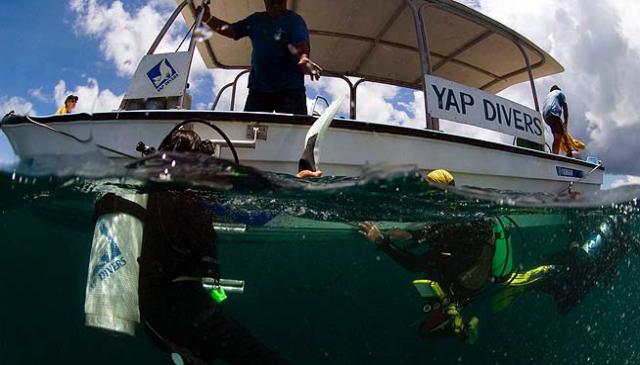
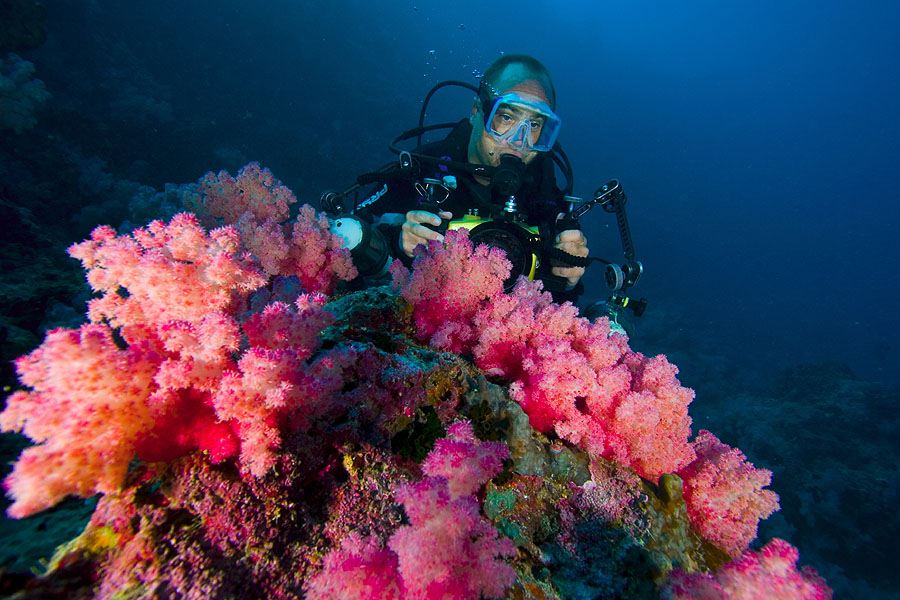
So if you would like to dive a 8,243sq mile manta ray preserve, view some 200 soft and hard coral species, see some military war relics, observe or take images of numerous small to pelagic fish, snorkel with small jellyfish and nudibranchs, do some game fishing, kayak around mangrove lined canals, paddle to secluded beaches, or just do some incredible scuba diving with over 100ft of visibility, then you may wish to spend some time on an island called Yap.
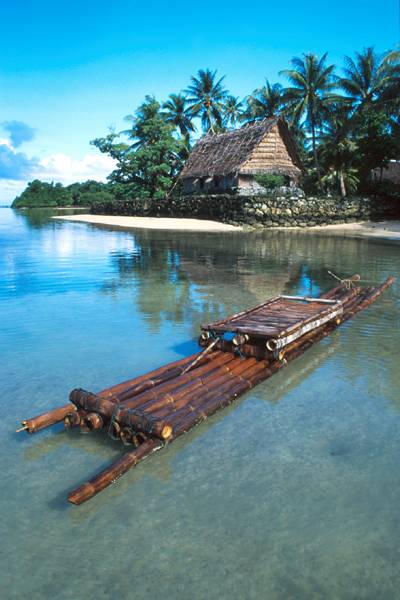
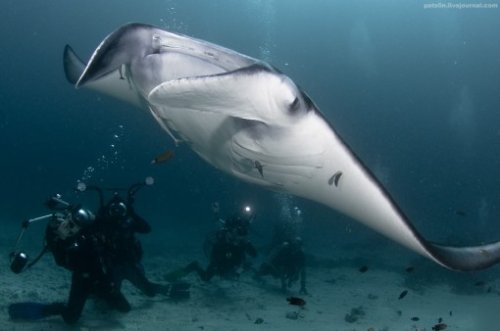
For more information on exclusive dive travel offers, competitive airfare, and how you can visit Yap Divers and Manta Ray Bay Resort, Click Here.
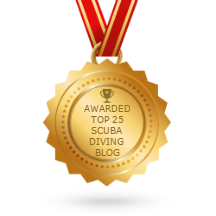
Recent Posts
- Finding the Right Dive Resort For Your Vacation
- Luxury Dive Resorts That Offer Unforgettable Experiences
- Eastern Malaysia, Sabah, Sipadan & More
- Ghost Pipefish, Pipefish, Seahorses, and Sea Dragons
- Australia Queensland and the Great Barrier Reef
- Tioman Islands, Malaysia
- The Riviera Maya
- The Peter Diving System
- The Bay Islands, Roatan, Utila, Guanaja, and more.
- The Cuttlefish; The Undisputed Master of Camouflage.
Categories
- Australia
- Bahamas
- Bay Islands
- Belize
- Blue Hole
- Bonaire Diving
- Borneo
- Cayman Brac
- Cayman Islands
- Cozumel
- Curacao
- Cuttlefish
- Dive Destinations
- Dive Equipment
- Dive Liveaboards
- Dive Resorts / Properties
- Dive Travel
- Dive Travel Deals
- Diver Wellness
- Dolphins
- Dominica
- eagle rays
- Eagle Rays
- Family Travel
- Fiji
- Galapagos Islands
- Great White Shark cage diving
- Guanaja
- Honduras
- Indonesia
- Infographics
- Isla Mujeres
- Learning to Dive
- Little Cayman
- Maduro Dive Newsletter
- Malaysia
- Maldives
- Manta Rays
- Marine Life
- Mexico
- Micronesia
- Muck Diving
- Myamar
- Palau
- Papua New Guinea
- Pelagics
- Philippines
- Pinnacles
- Polynesia
- Reefs
- Riviera Maya
- Roatan
- Saba
- Sabah
- Scuba Diving
- Scuba Gear Reviews
- Scuba News/Events
- Scuba Training & Education
- Sea Legends
- sea lions
- Sea of Cortez
- Sharks
- Single Travel
- Sipadan
- Socorro Islands
- South Africa
- Specialties
- ST. Kitts
- Stingrays
- Tahiti
- Thailand
- The Bucket List
- Tobago
- Truk Lagoon (Chuuk)
- Turks and Caicos Islands
- Turtles
- Uncategorized
- Underwater Photography
- Underwater Video
- Utila
- Walls
- Whale Sharks
- Whales
- Wreck Diving
- Wrecks
- Yap
Archives
- June 2025
- January 2024
- April 2023
- March 2020
- March 2019
- January 2019
- November 2018
- September 2018
- July 2018
- May 2018
- March 2018
- January 2018
- October 2017
- September 2017
- June 2017
- April 2017
- February 2017
- January 2017
- October 2016
- August 2016
- July 2016
- May 2016
- March 2016
- February 2016
- January 2016
- December 2015
- August 2015
- June 2015
- April 2015
- January 2015
- November 2014
- July 2014
- April 2014
- February 2014
- December 2013
- November 2013
- October 2013
- September 2013
- August 2013
- July 2013
- June 2013
- May 2013
- April 2013
- March 2013
- February 2013
- January 2013
- December 2012
- November 2012
- October 2012
- September 2012
- August 2012
- July 2012
- June 2012
- May 2012
- April 2012
